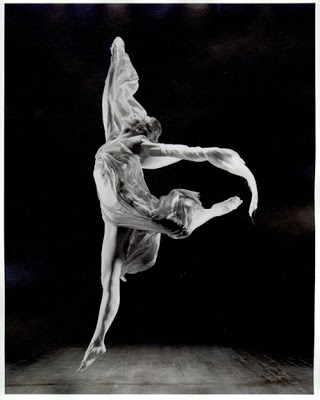
Duncan's fondness for flowing scarves which trailed behind her was the cause of her death in a freak automobile accident in Nice, France, on the night of September 14, 1927, at the age of 50. The scarf was hand-painted silk from the Russian-born artist Roman Chatov. The accident gave rise to Gertrude Stein's mordant remark that "affectations can be dangerous."
Duncan was a passenger in the Amilcar automobile of a handsome French-Italian mechanic, Benoît Falchetto, whom she had nicknamed "Buggatti" (sic). Before getting into the car, she said to a friend, Mary Desti (mother of 1940s Hollywood writer-director Preston Sturges), and some companions, "Adieu, mes amis. Je vais à la gloire!" ("Goodbye, my friends, I am off to glory!"). However, according to the diaries of the American novelist Glenway Wescott, who was in Nice at the time and visited Duncan's body in the morgue (his diaries are in the Beinecke Library at Yale University), Desti admitted that she had lied about Duncan's last words. Instead, she told Wescott, the dancer actually said, "Je vais à l'amour" ("I am off to love"), which Desti considered too embarrassing to go down in history as the legend's final utterance, especially as it suggested that Duncan hoped that she and Falchetto were going to her hotel for a sexual assignation.
Whatever her actual last words, when Falchetto drove off, Duncan's immense handpainted silk scarf—a gift from Desti that was large enough to wrap around her body and neck and flutter out of the car, became entangled around one of the vehicle's open-spoked wheels and rear axle. As The New York Times noted in its obituary of the dancer on September 15, 1927, "Isadora Duncan, the American dancer, tonight met a tragic death at Nice on the Riviera. According to dispatches from Nice Miss Duncan was hurled in an extraordinary manner from an open automobile in which she was riding and instantly killed by the force of her fall to the stone pavement." Other sources describe her death as resulting from strangulation, noting that she was almost decapitated by the sudden tightening of the scarf around her neck.
The beautiful image above is from Mushin.
